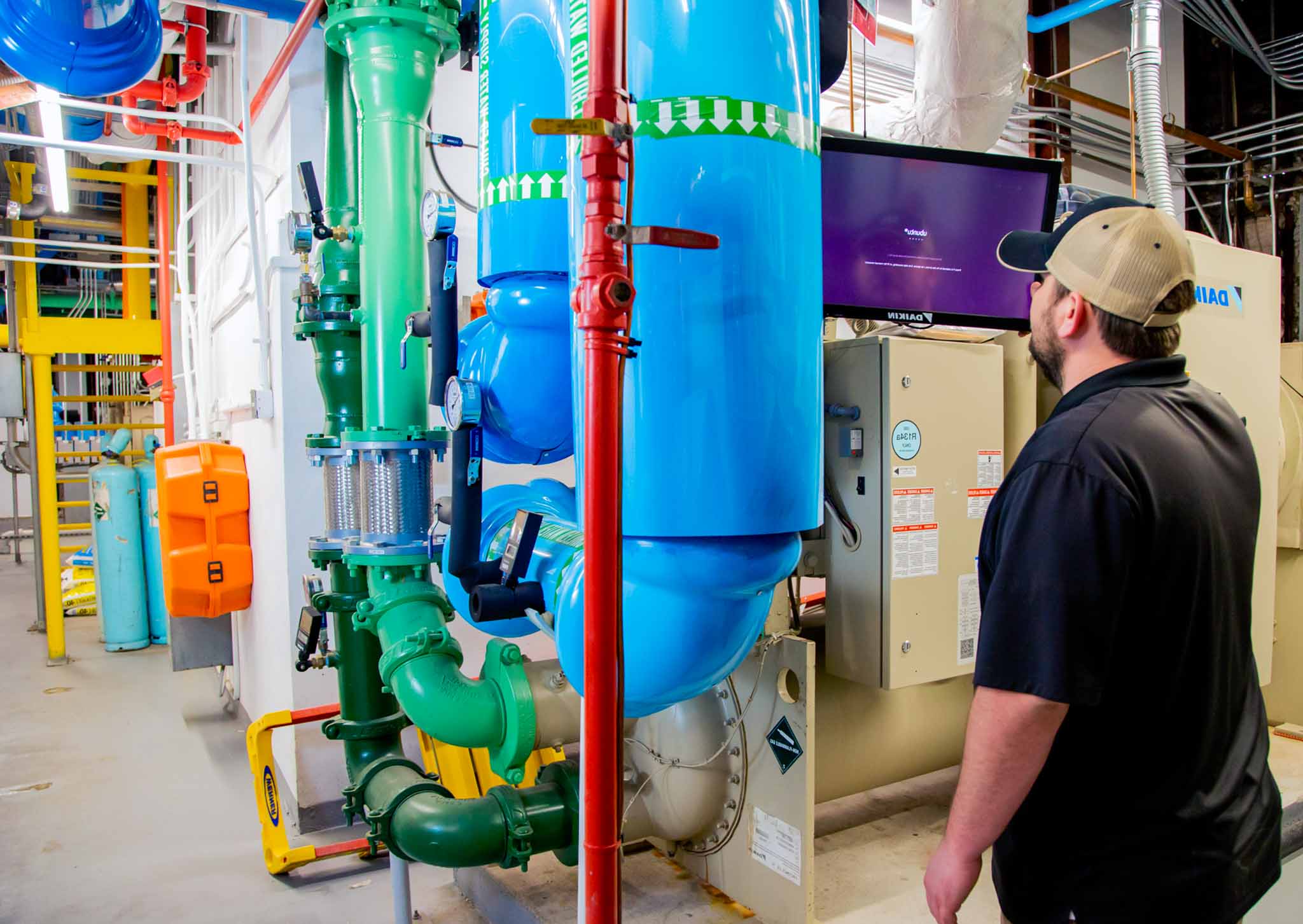
Smart buildings increase comfort, efficiency and sustainability for student housing
Our communities are home to more than 180,000 college students who are busy learning and growing every day. Behind the scenes, the buildings they live in are getting smarter, too. We are equipping more American Campus Communities properties with building automation systems (BAS), which centralize lighting, heating and cooling, and other essential infrastructure into one intelligent technology ecosystem. This enables us to automate the operation of our equipment and optimize its efficiency.
At communities with BAS, thermostats, boilers and other pieces of equipment are each fitted with a sensor that tracks key operational data and sends it to the cloud. From a central dashboard, the ACC facilities teams can remotely program equipment, adjust settings and identify preventive maintenance needs. The system also alerts the team of any offline equipment or urgent repairs.
We now operate BAS in 31 communities that we either own or manage, and are planning six more installations by the end of 2025. We’ve found five key benefits for our residents, maintenance teams and the environment.
Keeps Residents Comfortable
With BAS, we can set our buildings to automatically adjust the temperature based on the weather, time of year and time of day.
Saves Time on Preventive Maintenance
Each morning our facilities teams meet to review the BAS dashboard and daily maintenance needs. We work with our software partner to customize the dashboard for each community, so the team can not only see a list of equipment but also a diagram of each component to pinpoint the exact location of potential maintenance or repairs. Our teams can then attend to the most pressing issues first before conducting their scheduled preventative maintenance. Before BAS, the team had to do a property walk-through every day to inspect equipment. Although they still do these daily rounds, the BAS data enables them to prioritize and be more efficient with their time.
“BAS is so precise that it can show us that a thermostat in room 504 is offline, or that a specific component of our HVAC system needs maintenance,” said Tony Slusser, ACC’s director of facilities who leads the implementation and management of BAS.
Proactively Identifies Issues
Because BAS enables our teams to identify issues immediately, they can make repairs before residents are affected or need to submit a work order.
“If a boiler needs attention at 2 a.m., we’re on the case so students can wake up, take a hot shower and tackle the day,” said Slusser.
Saves Operational Costs
Staying on top of preventative maintenance and catching repair needs early extends the lifespan of our equipment, which saves costs. Every bit counts toward our goal of providing housing at affordable rates.
Reduces Environmental Impact
We have a goal to reduce the greenhouse gas (GHG) emissions from ACC’s owned portfolio by 15% by 2025, using 2022 as our baseline year. At the end of 2023, we had reduced GHGs by 9.8%. The efficiencies achieved through BAS are one of our key conservation tools. Smart thermostats that optimize temperature for local conditions, along with smart lighting that automatically responds to unoccupied spaces, helps reduce energy consumption. Identifying these issues immediately prevents wasted energy and water. And extending the lifespan of our equipment and replacing items less frequently also helps us reduce our environmental impact.
“In addition to our own goals, ACC is committed to helping our university partners meet their sustainability goals, and to providing students with a comfortable home where they’re set up for success,” said Jason Wills, ACC’s senior vice president of corporate responsibility and development. “BAS has been a win for us on all fronts. And we are actively adding it into existing communities, and using it as a standard for planning new developments.”






